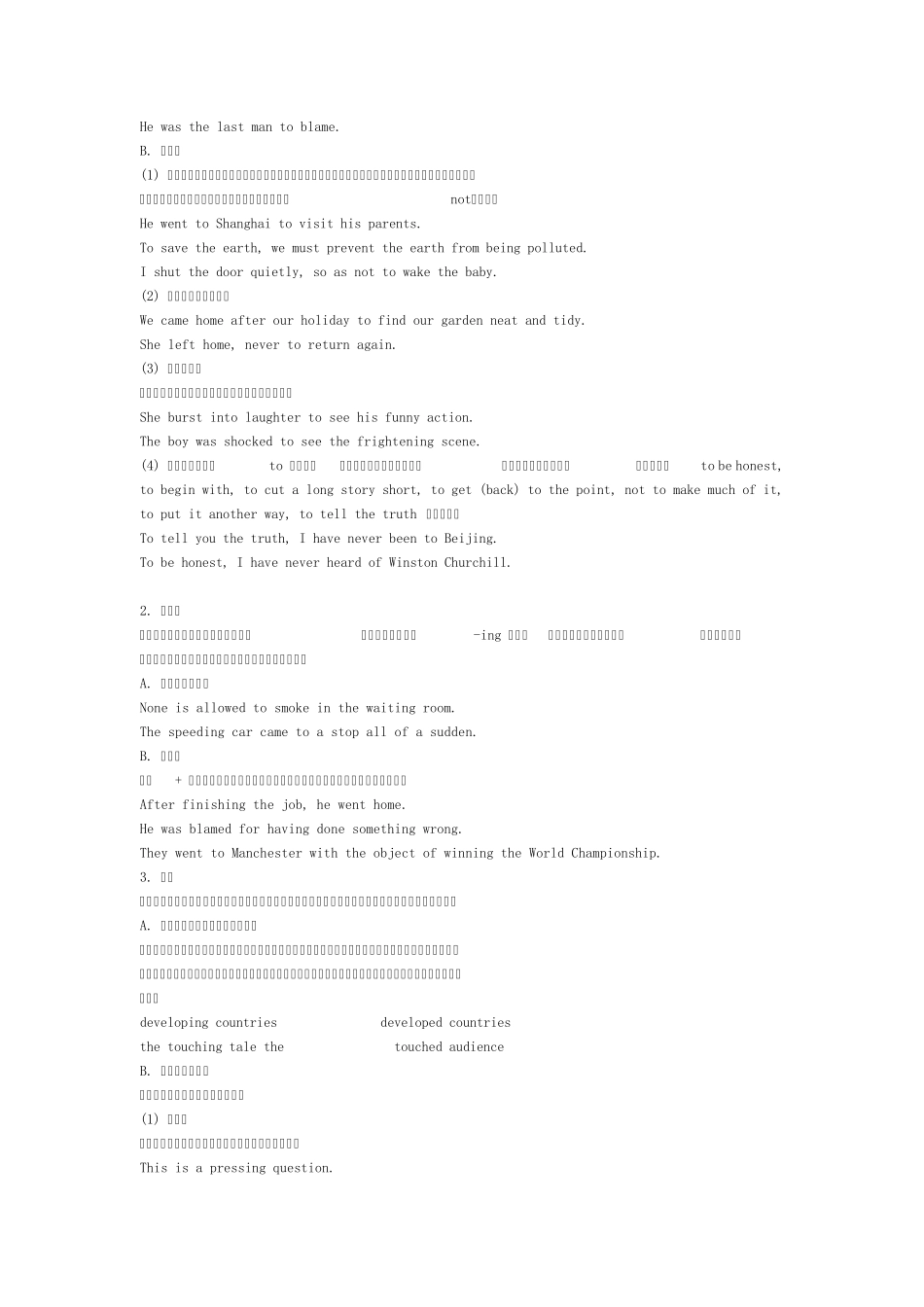2013 年 同等学力英语语法专项复习: 非谓语动词作定语和状语 第四节 非谓语动词作定语和状语 一、总述非谓语动词是指动词不定式、动名词和分词。它们是动词的非限定形式。在句子中起着一些特殊的作用。一般来说,动词不定式可充当除谓语以外的其他各种成分;动名词只可作句子的主语、定语、表语、宾语和补语;分词只能作定语、表语、状语及补语。即使是作同一种成分,不同非谓语形式之间仍然存在差异。不定式作状语时,可表示目的、原因、结果和方式等;分词作状语不仅可表示原因、结果方式,还可以表示时间、条件、伴随情况及让步等。因此考生在做题时应分析状语表达的是何种意思,才能做也正确的选择。 非谓语动词的时态、语态的表达形式见下表: 二、重要考点 1. 动词不定式 不定式是指带to 的动词原形(使用中有时不带to),在句中起形容词或副词的作用,可以作定语和状语。 A. 作定语 (1) 动词不定式与其修饰的词之间往往有动宾关系,如果该不定式是不及物动词,其后有必要的介词。例如: He’ s a pleasant fellow to work with. There’ s nothing to worry about. (2) 有些名词后常跟不定式作定语。例如:time, reason, chance, right, ability, willingness, need, anxiety, wish, plan 等。例如: Women should have the right to receive education. There is no time to hesitate. (3) the first, the second, the last, the best 等之后用不定式作定语。例如: The monitor will be the first to come. He was the last man to blame. B. 作状语 (1) 作目的状语不定式作状语时,其动作发生在谓语动词之后,一般置于句子末尾。但是,如果表示强调,亦可置于句首。其否定形式为:在不定式符号前加not。例如: He went to Shanghai to visit his parents. To save the earth, we must prevent the earth from being polluted. I shut the door quietly, so as not to wake the baby. (2) 作结果状语。例如: We came home after our holiday to find our garden neat and tidy. She left home, never to return again. (3) 作原因状语 不定式作原因状语时,一般放在句子末尾。例如: She burst into laughter to see his funny action. The boy was shocked to see t...


